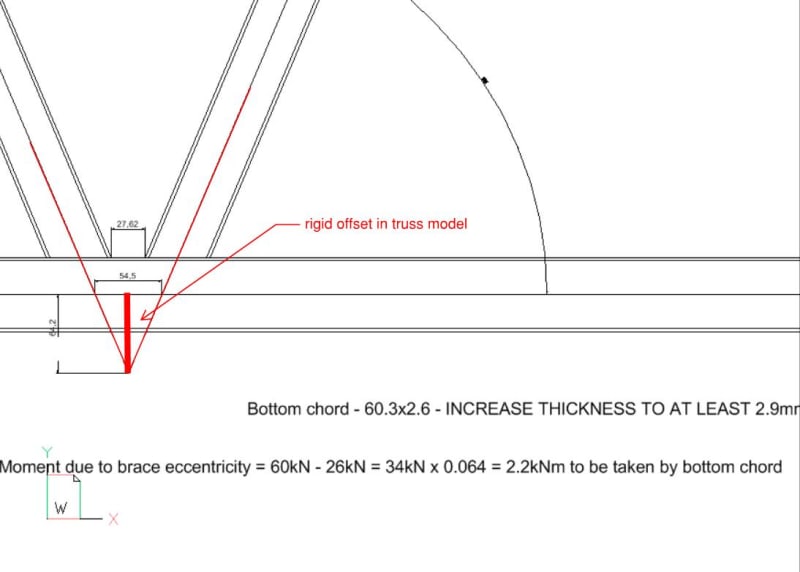drbrainsol
Structural
Hi,
Newbie here so please don't be too harsh!
I am designing some modification to an existing steel truss. Due to the sizes of the structural elements used (welded CHSs), the joints between the braces have have what I believe to be significant eccentricities at the joints with the top / bottom chords (see sketch attached).
BS EN 1993-1-8 states that bending moments arising from join eccentricity should be considered in the analysis of the chords (distributed equally on either side of the joint). My question is...could these eccentricities be taken into account in the global analysis model and then "ignored" in the design of the joint? Would this be good enough to satisfy the BS EN requirement to consider the joint eccentricities?
The main reason for doing the above is that I am using MIDAS Gen to model and design the steel structure to BS EN 1993 and hand calcs to design the joints. If modelling the eccentricities spares me from having to do an additional hand calc to prove that the chords can take the moment from the joint I would prefer to do the analysis this way.
Hope this makes sense?
Newbie here so please don't be too harsh!
I am designing some modification to an existing steel truss. Due to the sizes of the structural elements used (welded CHSs), the joints between the braces have have what I believe to be significant eccentricities at the joints with the top / bottom chords (see sketch attached).
BS EN 1993-1-8 states that bending moments arising from join eccentricity should be considered in the analysis of the chords (distributed equally on either side of the joint). My question is...could these eccentricities be taken into account in the global analysis model and then "ignored" in the design of the joint? Would this be good enough to satisfy the BS EN requirement to consider the joint eccentricities?
The main reason for doing the above is that I am using MIDAS Gen to model and design the steel structure to BS EN 1993 and hand calcs to design the joints. If modelling the eccentricities spares me from having to do an additional hand calc to prove that the chords can take the moment from the joint I would prefer to do the analysis this way.
Hope this makes sense?

